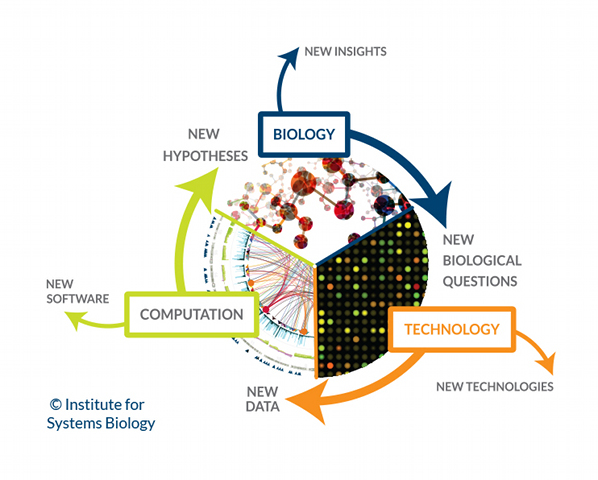Illustration of the Trinity of Systems Biology, from the Institute of Systems Biology (ISB) and ISB’s Innovation Engine. “This virtuous cycle of biology driving technology driving computation can exist only in a cross-disciplinary environment where biologists, chemists, computer scientist, engineers, mathematicians, physicists, physicians and others can come together in teams to tackle grand challenges.” [1] Perhaps a potential complementary knowledge gap to be filled in the trinity of the innovation engine would be economic geography and the field of international business (IB) studies to investigate the facets of impact of such an innovation engine on economic policies and global value chains.
Text © CM Cordeiro, Sweden 2016
When studying trends of technological innovation, my thoughts are often drawn towards the evolution of the robotics industry and the impact of systems biology on machine design / function. Developed from the perspective of biological evolution as described in a 2006 study on self-modeling resilient machines, intelligent machines can self-diagnose its context, morph, adapt behaviour and replicate:
“Here, we describe an active process that allows a machine to sustain performance through an autonomous and continuous process of self-modeling. A robot is able to indirectly infer its own morphology through self-directed exploration and then use the resulting self-models to synthesize
